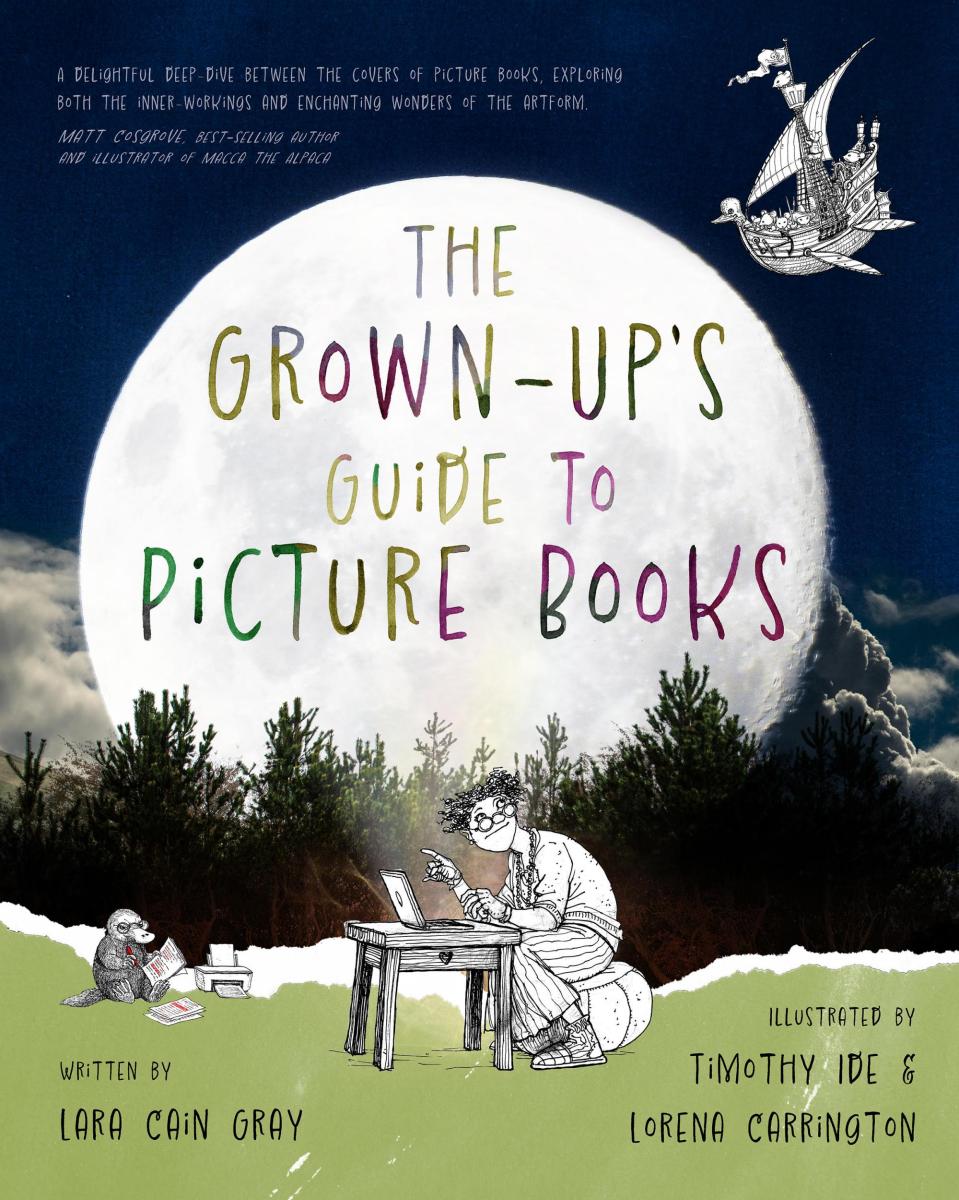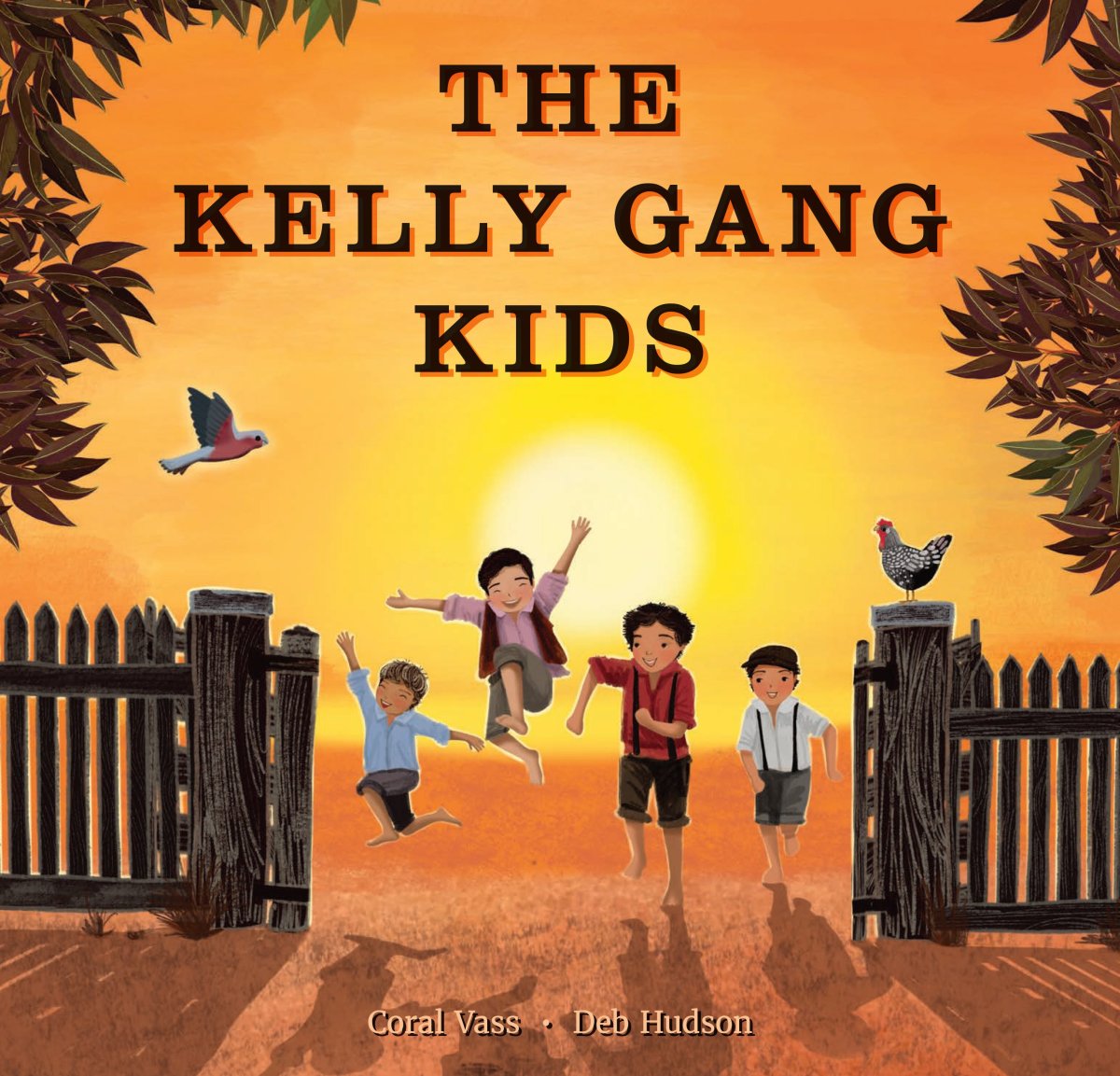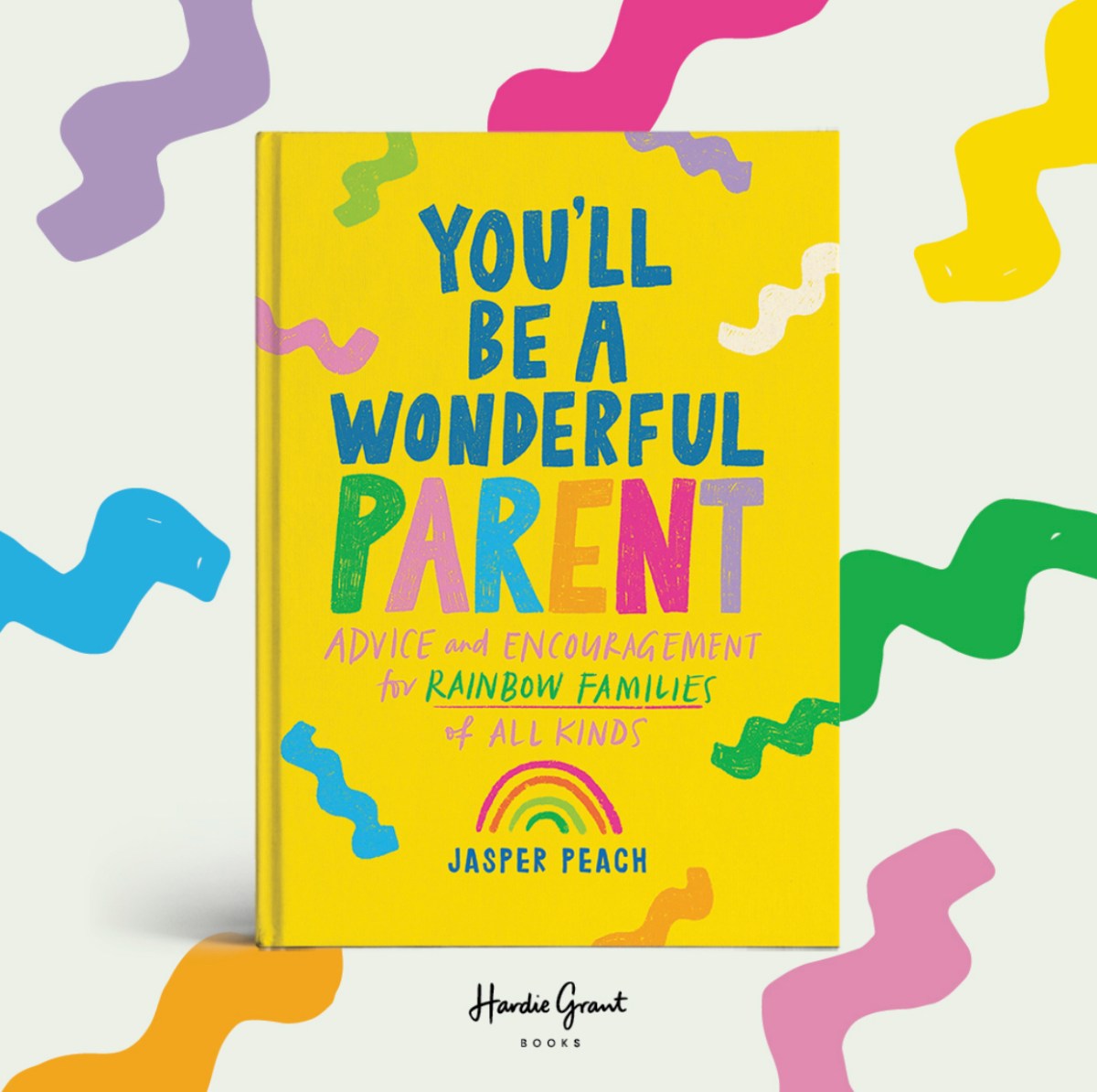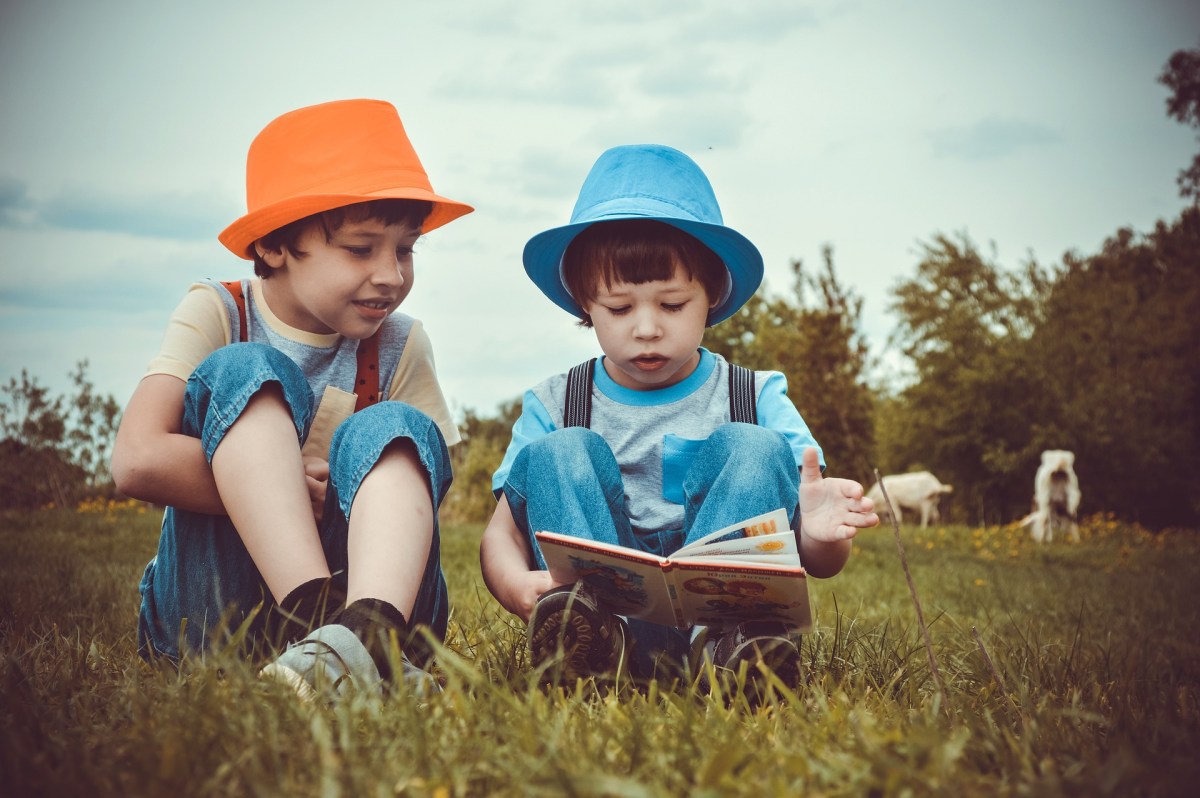It’s hard enough working on a book yourself, but collaborating with an illustrator can mean an additional level of difficulty, as it requires coordination and more planning before publication.
ArtsHub reached out to a number of authors to demystify the process, as well as to explore some of the joys and challenges of adding pictures to your text. The work relationship, though mutually respectful, may not necessarily be a close one. Indeed, most authors are a couple of steps removed from the commissioned illustrator, who is usually trusted to have autonomy over the artwork.
Facts and misconceptions about children’s literature
First, let’s survey the scene of children’s literature. Lara Cain Gray’s The Grown-Up’s Guide to Picture Books is an illustrated A to Z guide to what constitutes a great picture book. Illustrated by Lorena Carrington and Timothy Ide, the book ‘reminds us that these deceptively simple books in fact rely on sophisticated writing and thoughtful art,’ says Gray.

‘I have worked in librarianship and publishing for many years and can’t count the number of times I’ve heard people say that picture books must be “easy” to create, given the limited word count and child-friendly art. On the contrary, when you really stop to think about it, creating rich characters and emotionally impactful stories in a few hundred words is really tough.
‘And illustrations in children’s books are not simply decorative; they carry the load of complementing and expanding the narrative, including dynamic visual literacy opportunities, as well as increasing engagement. Importantly, Australia’s best children’s illustrators are accomplished artists in their own rights, often exhibiting and working across a range of projects,’ says Gray.
Explaining why she felt the need to create a guidebook championing children’s books and unpacking some of the science behind them, Gray tells ArtsHub, ‘There are some really problematic contradictions in the public discourse about picture books. We ascribe them the role of teaching children to read, supporting their lifelong love of reading, developing their moral worldviews and keeping them entertained at bedtime.
‘Those of us who grew up as readers can identify favourite picture books and speak to their importance in our lives. And yet, somehow we often still view them as lesser in the literary world and encourage our kids to move on from them to “proper books” as soon as their reading skills can handle it. To me, that just doesn’t make sense.’
How is the illustrator chosen?
Some authors already have prior knowledge of their collaborator, but as Gray points out, most first-time children’s writers are surprised that they may not get to choose, or even meet, the illustrator of their book. ‘The author/illustrator match is often a decision made by publishers, based on a web of financial and reputational factors,’ she says.
Coral Vass is the author of The Kelly Gang Kids, a picture book about the young Ned Kelly, ‘before he turned to bushranging, Ned, like most young boys, got up to all sorts of mischief and just wanted to play with his mates. It’s based on fact and a little bit of poetic licence,’ says Vass.
She already knew the illustrator, Deb Hudson, and was an admirer of her work. ‘Deb and I worked independently of each other on this project. I wrote the text, while she interpreted the text and illustrated accordingly. About a year into the project, Deb and I met up with the publisher to review her work in progress. This was really the only time we collaborated in person on this book until it was completed.’
Freddie Spector, Fact Collector by Ashleigh Barton is a junior fiction series about a little boy who loves collecting facts; the books are illustrated by Peter Cheong. Barton was also a fan of her chosen artist and suggested him to the publisher. ‘I didn’t really work with Peter at all. I was sent his rough illustrations by the publisher, which I was given an opportunity to provide feedback on and that was pretty much the extent of our collaboration. Because this is a junior fiction story and not a picture book, Peter went off the manuscript rather than illustration directions, which I would normally add to a picture book text.’
Jasper Peach’s illustrator for their book You’ll be a Wonderful Parent, Quince Frances, was a friend who lived nearby. Peach’s book is ‘an encouragement for rainbow families of all kinds, whether you’re daring to dream, in the process of trying or well and truly in it. It is an accessible text, which isn’t medical in nature, but more about the ways our families are formed, and what family means in this context,’ they say. With the artist being a non-binary birthing parent, Peach felt their lived experience would bring an understanding to the text.
Although the majority of illustrators are professional and sourced through personal author contacts and via publishers, Karen Martin found hers through an alternative route. As a former teacher and trainer, she wanted to support emerging artists. Her book, The Little Book of Red Flags is a ‘curated anthology of social media snippets that served as breadcrumbs on my journey toward self-discovery’.
Martin placed a request in her local mothers’ Facebook group and ended up with a year 11 student, Thomas Corboy. With help from the Australian Society of Authors’ contract template (The Society of Authors in the UK offer similar resources), and Corboy’s father, Martin made sure the agreement was a fair and equitable one. ‘For me, it was a great process with a great outcome. For Tom, he received remuneration for his work and will have a published book for his folio, should he wish for a career in this area,’ she says.
Sometimes, however, a choice of artist is granted to the author. Shannon Meyerkort’s Brilliant Minds: 30 Dyslexic Heroes Who Changed Our World is a collection of short biographical stories for children and their families about inspiring people who have dyslexia. Meyerkort was given the option of about six illustrators, all of whom had already worked with her publisher, Affirm, before. ‘I was sent a portfolio of their work and asked to rank them. Luckily, my first choice was also my editor’s first choice, and she (Amy Blackwell) was available at the right time.

‘Amy and I never met; she was in the UK and I was in Perth. We never even corresponded directly, always through the publisher. But she really got the concept of the book I was trying to make, and was very receptive to any changes we suggested. But she was the expert in her field, so we basically just let her do what she wanted – and it was perfect.’
Joys and challenges of working with an illustrator
Vass has worked with many illustrators over the years and says, ‘One of the wonderful things about working with an illustrator, is trusting them to interpret the text and then seeing them exceed expectations. I try not to write illustration notes, as the illustrator is 50% of the partnership, and in picture books they are probably 80% to 90% more important… I always love to afford the illustrator dignity and the freedom to interpret the work as best they see how (not as I think it should be). By trusting the illustrator and giving them freedom in this space, I have never once been disappointed.

‘If written well, the text should be enough for the illustrator to interpret well, and then some. The challenge is trusting the process and trusting all parties involved, from the illustrator, to the editor, to the publisher, to the marketing and sales teams. But, as much as this is a challenge, it’s also wonderfully humbling to know that it takes a “village” to publish a book, and seeing yourself as only one part of the process is liberating.’
Peach too was satisfied with the results. ‘The good part was that being someone who works with the alphabet, rich imagery is part of my craft, but seeing these images come to life via another person’s imagination and filter was quite magical and strangely verifying for me as a writer. I could see that I was being clear in my word wrangling… [But] I needed to direct them to the publisher when they had issues or problems, and holding that boundary felt difficult but completely essential.’

Though Meyerkort was thrilled with the work of her illustrator – ‘she really understood the brief and there were never any awkward conversations’ – she adds, ‘But I hadn’t really considered that the book would be classified as a “picture book” when I submitted it, so sharing my royalties was a bit of a shock. But we don’t do it for the money…’
Read: Book groups: community-building hubs
Top tip for working with illustrators
‘If you are commissioning or collaborating with an illustrator, I think the key is to honour the different skills of the various parties who create the book. If you are a picture book writer, prepare to let the illustrator (and editors, and others) bring their unique perspective to the story. That’s what they do best. Being overly precious or prescriptive about illustrations can actually lead to an inferior product. Learn to let go!’ recommends Gray.





